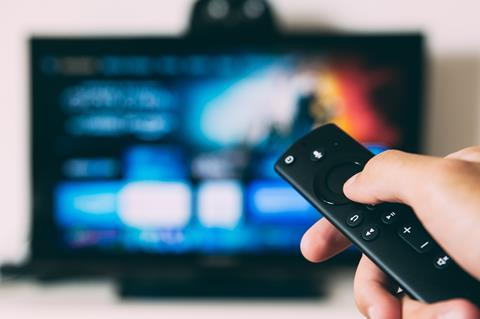Maureen Kerr, partner and head of media & entertainment at UK Arthur D. Little, explains what it could mean for the sector

After a dramatic, Covid-induced spike in streaming, the industry has seen a reset in both audience demand and expectations over the past few years. With churn an ongoing issue and under pressure from investors, media companies and content creators alike are looking at ways to increase profitability while reducing costs. As part of this many have increased prices, cracked down on password sharing, added ad-supported tiers, launched content bundles, and decreased content budgets.
However, one area that has the potential to transform the wider industry is generative AI (GenAI), both to accelerate content production and more accurately tailor programming to audience tastes. Yet, the use of GenAI brings ethical and regulatory challenges that need to be addressed if its benefits are to be maximised.
The rise of GenAI
The global AI market in media and entertainment is expected to hit $104.4 billion (£83.3bn) by 2030, up from $10.3 billion (£8.2bn) in 2021, according to market research consultancy Straits Research. There are many AI use cases across the TV and film landscape, along with regulatory and ethical considerations that have been especially topical in the wake of the WGA and SAG-AFTRA strikes. We believe that GenAI will now become increasingly valuable in accelerating content creation while reducing costs by automating previously manual processes.
GenAI in content creation
Many experiments have already utilised AI in the content-creation space. For example, Banijay announced its AI Creative Fund, providing development funding for producers to showcase ideas that successfully use technology and innovation. The BBC has been using AI on its Springwatch and Winterwatch nature programmes for several years, developing software that monitors live video feeds, learns how to recognise different animals, and films when the required wildlife is in frame. Working with Synthesia, Reuters has harnessed AI to create automated, presenter-led sports news summaries. Netflix has used Resemble’s voice technology in Andy Warhol Diaries, while Respeecher’s voice de-ageing solution was deployed in the making of Disney+’s Obi-Wan Kenobi.
GenAI across the value chain
There are numerous AI use cases beyond content creation across the media value chain. GenAI tools are already being utilised to generate realistic visuals, automate video-editing processes, and accelerate localisation. For example, AI is now being used for foreign language translation, dubbing and automated lip-syncing in TV streaming, such as in the Portuguese series Vanda on Hulu. Technology companies such as LibDub AI digitally manipulate actors’ facial expressions to match spoken words in foreign languages, achieving an extraordinary level of realism and fluency. OpenAI’s Sora text-to-video tool creates video clips from natural language inputs, replacing traditional post-production techniques such as colour-correction, rotoscoping and sound design, without requiring extensive CGI.
AI usage was a hot topic during the WGA strikes. The final agreement protects Hollywood’s writers from AI-generated scripts by specifying that the writing cannot be considered “literary material,” and the use of AI must have obtained consent and be credited and compensated properly.
GenAI to improve personalisation
In terms of engagement and distribution, GenAI also has a big part to play in optimising the viewing experience. Streaming platforms are using “microgenres” to organise content and gather viewer preference data, benefiting both users and advertisers. For example, ITV’s AdLabs pilots “content clustering,” while Reach and News UK use AI for personalised experiences. In terms of marketing, Paramount used Resemble AI to deliver a personalised Ghostface call experience while Warner Bros. created a Barbie selfie generator that could remove backgrounds at scale through PhotoRoom’s API.
The challenges to the use of GenAI
However, AI tools are not yet suitable for replacing human-made content entirely. Industries will need to adapt and embrace these technologies while considering regulatory and legal challenges as well as ethical implications.
On the regulatory side the EU’s AI Act may impact how AI is governed across the globe, promoting responsible practices but potentially hindering innovation. Streamers and other media companies need to keep abreast of legislation and its impact in key markets to avoid legal challenges.
One area where GenAI is already facing legal challenges is around copyright, and in particular the use of existing materials to train Large Language Models (LLMs). For example, the New York Times recently filed a lawsuit against OpenAI, accusing it of extensive copying of the newspaper’s content. Getty Images also sued Stability AI for using its content without permission. On the positive side a groundbreaking agreement has been reached between Axel Springer and OpenAI. Under this deal, OpenAI will be permitted to train AI models using the publisher’s content in return for a one-time payment and annual license fees. Since this deal, Le Monde and the Financial Times have followed suit.
Ethical considerations also need to be navigated, with many consumers concerned about the spread of GenAI and the impact on the programmes they watch, and how their viewing data is used. Transparency is required to overcome these issues.
As GenAI continues to evolve, its impact on the streaming industry is expected to grow, offering innovative solutions for content creation and distribution. To benefit, companies need to embrace the technology, but ensure they are acting transparently and ethically to overcome any resistance from the public.

Maureen Kerr is partner and head of media & entertainment at UK Arthur D. Little








No comments yet